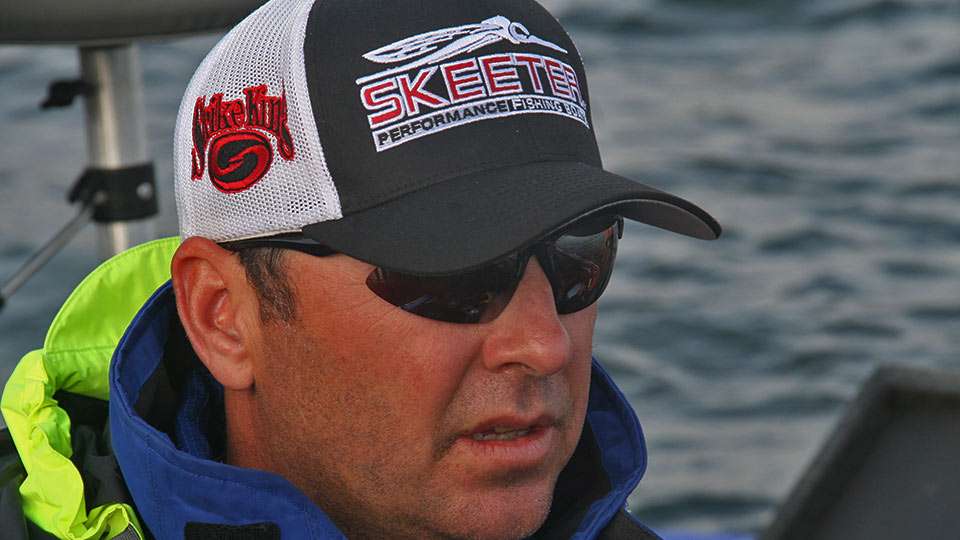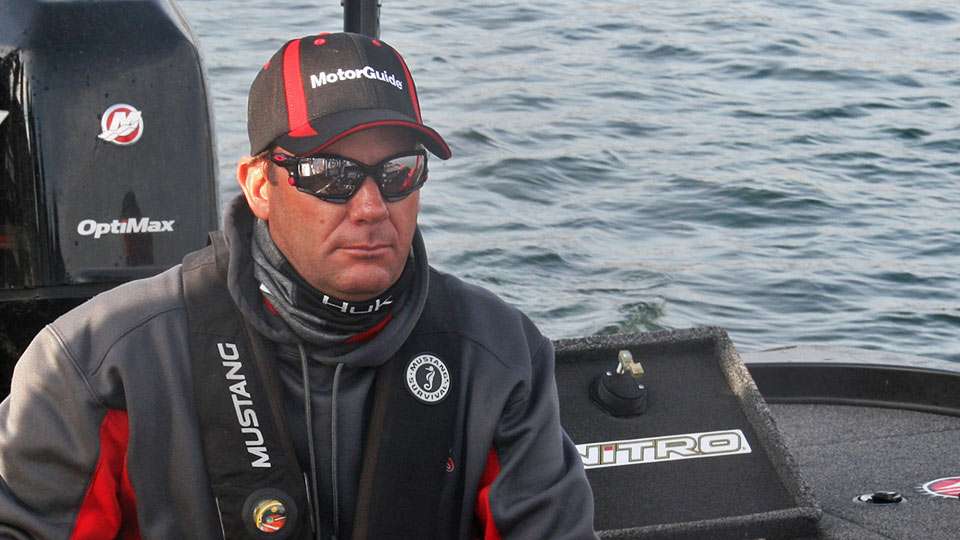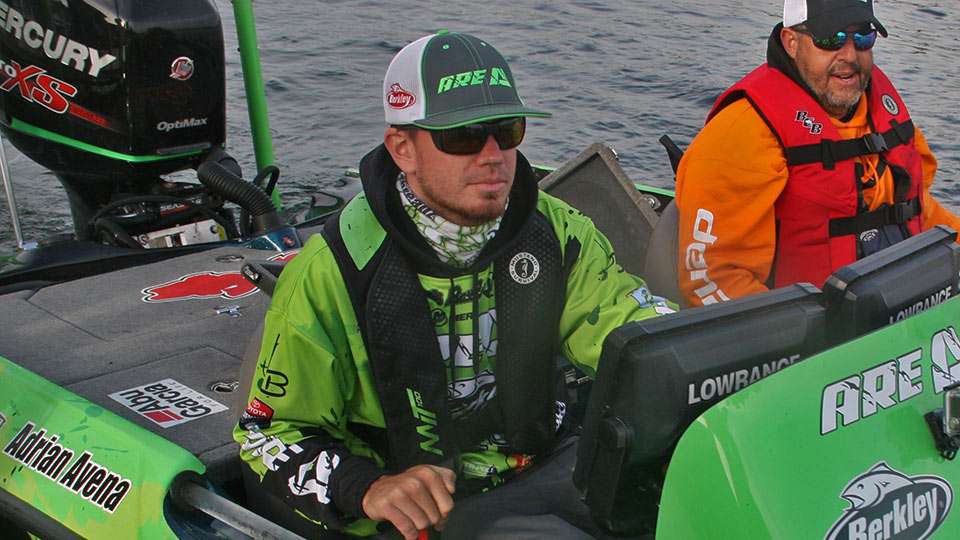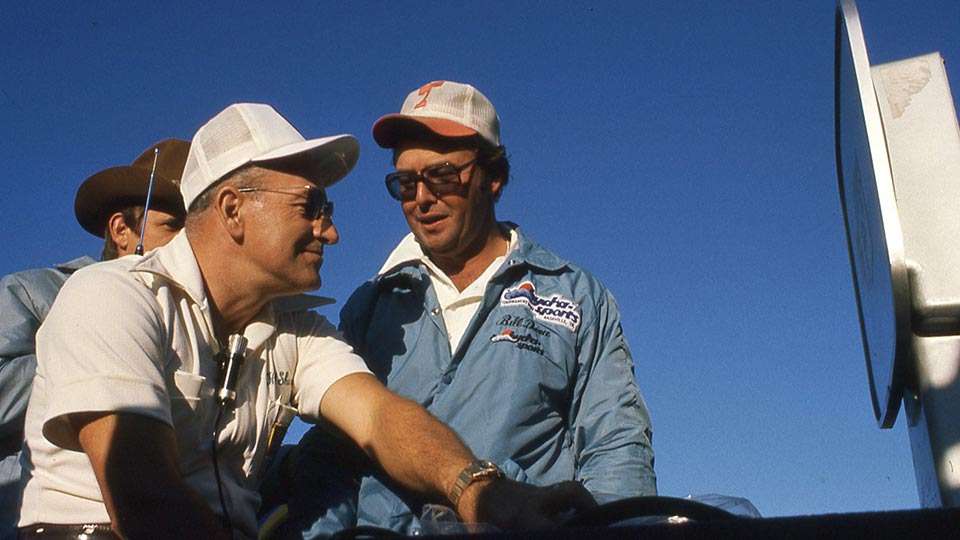
PART III: HATS OFF TO ELITES
This is Part 3 of a five-part series on Elite Series anglers and their relationship with hats.
Last January, there was somewhat of a mystery which team catcher Mike Piazza would be inducted with into the Baseball Hall of Fame. Drafted by the Los Angeles Dodgers but having a longer stint with the New York Mets, some wondered which team’s cap he would choose for his plaque in Cooperstown, N.Y.
Deciding which sponsor’s hat to wear daily might not make for as difficult a choice, but the Bassmaster Elite Series pros do have to consider it whether they’re fishing a tournament or at a public appearance.
Some anglers have it in their contracts which hats they will wear when and where. It’s a no-brainer if the appearance is for a particular sponsor, but on tournament days, it is probably less stressful to know commitments.
Edwin Evers is among those who have their daily hat selections down in ink, at least loosely.
“I use four a tournament,” he said. “I have a hat for practice I’m supposed to wear, and three different hats I wear tournament days, and I rotate them.”
After he won the 2016 GEICO Bassmaster Classic, Evers said he made sure to bring his complete assortment of sponsor hats for a photo session, when he went through “probably about 5 or 6 different ones during my Classic shoot.”
Kevin VanDam said he too has to keep his hats in a row. He’s long had to make sure he wore the correct one on the right day, whether that be Nitro, Bass Pro Shops, Quantum, Motorguide, Hummingbird, etc.

“I always have a couple dozen from each sponsor at all times,” KVD said. “I have different stipulations you have to wear them on certain days.”
Davy Hite learned early that the flat area of the hat, right there above his face, is the No. 1 advertising space for a bass pro. Therefore its consideration is critical.
“I think that’s something that all anglers at any level should understand,” Hite said. “I had some good advice from some veterans when I started fishing.
“You’ve got to understand prime real estate and you can’t give that away. If you’re out here spending $75,000 a year, you’ve got to know what your prime real estate is and treat it that way, and not give it away. If you give that away, then how are you going to make it at this level?”
A recent evolution of hats has anglers placing more and more signage on them. Along with that front area, logos are being put on both sides to increase the messages. Some even have signage on the bills or center back.
“The multi-branded hats are the only way to go. You’re having logos on all sides of your hat,” Elite rookie Adrian Avena said. “No matter what direction you’re getting photographed, you’re promoting your sponsors.”

Avena said he keeps meaningful hats like winners and maybe one style from each sponsor, which he says are always changing. His tournament hats, though, he actually has special ordered.
“The style of hat I wear is embroidered by a company based out of Ohio,” he said. “They make the best custom embroidered hats out there, with all my sponsors’ logos right where we want them.”
Sometimes anglers get their “pro staff” hats from one sponsor, then send them off to add logos of other sponsors. Most of the Elites are going with multiple sponsors on their hats.
Keith Combs, for example, has his main sponsor, BioborEB, front and center. On the sides of his hats are Yamaha, Strike King and Ranger Boats logos, and there’s another tout for Biobor with the phrase “The Ethanol Buster.”
Possibly the most messages/sponsors on one hat goes to Japanese angler Morizo Shimizu. On the front, he has “King” in reference to his nickname in his home country, and “Fish the Moment … I Have No Limit.” On the bill is a large message for Evergreen and Modo, his design for them, while on the sides are at least seven small sponsor patches.
Brent Chapman combines several logos on his hats, which he orders from a manufacturer.
“I have my own hats made. That way we can get all our sponsors logos on them, plus I like how they fit,” Chapman said of his Trokar hats. “Believe it or not, I only have like four of them. I could use some more.
“If you’re a professional fisherman, you tend to get a few hats, so every couple of years I’ve got to clean out the closet and give away some hats. Plus, sponsors are always changing logos. Just because you like some old hat, you can’t just wear it. They want you wearing the new stuff with the new logo, and stuff that looks better as well.”
Kevin VanDam said sponsors go that extra mile to make sure their anglers have hats that lean toward sharp — they aren’t the general giveaway SWAG — and fit them right. “They know that if we get a hat we like, we’re going to wear it more,” he said.
When they arrive in the mail, anglers are pretty sure what’s in a certain shaped, light box. They don’t come with instructions, but the anglers who make deals know to read the fine print on when they’re expected to wear which hat.
“I’ve had in my contracts probably since the mid-90s,” Hite said. “I know which hat I have to wear on what days.”
GOLF CLAIMS FIRST SPONSOR HATS
Golf lays claim to having the first sponsor hats, and it came about in fascinating fashion.
Golfweek wrote years ago that golfer Julius Boros was suffering from the heat during the 1968 PGA Championship in San Antonio. For relief, he pulled a giveaway bucket hat out of his golf bag.
On the hat was the logo of Amana, the appliance manufacturer. Far away watching on television, Amana executive Lou King took inspiration seeing Boros win while wearing his company’s hat.
Not long after King paid about 20 golf pros $50 each to wear Amana hats.
Bass fishing wasn’t far behind. Anglers like Don Butler, Ray Scott’s first B.A.S.S. member and winner of the second Classic, had Okiebug hats promoting his tackle store of the same name in Tulsa.
Not many anglers nowadays would even consider not getting a hat sponsor. It just isn’t done, except …

T FOR TENNESSEE
In the very early days of B.A.S.S. tournaments, pioneers like Roland Martin and Tom Mann had caps adorned with a familiar blue and yellow patch with a green fish, but it didn’t take long for their individual sponsors to take over that No. 1 advertising space.
Money for wearing a sponsor logo on my hat? Why yes, I believe I will.
But one angler turned a particular ball cap into his identity. Bill Dance, who hails from Memphis, Tenn., began wearing his iconic orange Tennessee hat in the late 1960s, and that came about rather honestly.
Dance said University of Tennessee football coach Doug Dickey was recruiting a player from Georgia who loved to fish, and Dickey asked Dance if he could contact the young man and put in a good word for UT. Soon afterward, Dance received several caps with a big orange T from Dickey in the mail.
“I was wearing one of the caps a little later when I won a big tournament,” Dance said. “I was photographed in the cap, so I wore it on my next TV show. Before I knew it, it had become part of my identity. I’ve been wearing a UT cap ever since.”
That trend is closing in on 50 years.
Click links for photo galleries on “Brief history of fishing hats,” and Hat Couture
Part I: Elites hold on to their hats | Part II: Elites keep memories under hat
Part IV: Purging hats a delicate endeavor | Part V: ‘Catching hats’ and wrong ones

